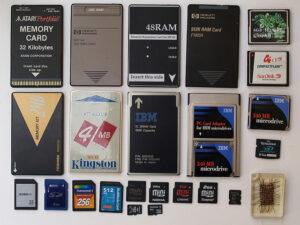From an early age our memory is tested. We know from cramming for exams and learning by rote however that within days we’ve forgotten much of what we’d learned. Learning sciences, and the understanding of the importance of techniques like spaced learning, are now shedding a lot of light on how we learn best. Yet we still want to know ‘how to improve memory’ without fully understanding the potential importance of it.
Some psychologists now believe that to improve memory is to improve intelligence, and as a CEO, entrepreneur or founder the constant development of your skills and knowledge is paramount for you to be the best leader you can be. You need to be aware of the conflicting arguments.
Crystallized intelligence is your knowledge and know-how built over the years. Capital cities and how to drive a car fall into this category. This grows as you age, until your memory starts to fail you. You don’t forget the physically connected skills as they are more ’embedded’, but the capital of Australia is Canberra is one that starts to escape you.
Fluid intelligence is the ability to think logically, recognise patterns and solve problems in innovative ways without the benefit of any pre-existing knowledge or know-how. Fluid intelligence has been long believed to peak about age 18-21 and then slowly decline. It has not been considered capable of being developed or trained and so the focus in learning has been on ‘trying hard’ and putting in the hours to develop the crystallized intelligence. Develop the long-term memory.
Working memory vs. long term memory is like your desktop (physical or digital) vs. your hard drive or cloud storage. It’s the space that enables you to manipulate information that you’re holding in your head. Problems, equations, plans of action: these all require you to mentally suspend multiple component parts and fit them together to get the best solution.
Attention and cognitive control are also a big part of fluid intelligence. Your ability to focus your attention on increasing numbers of component parts of a problem at once increases your ability to achieve a breakthrough solution as your brain has more elements to innovate with. To do this when hit with an overload of information is even more powerful.
So what to do?
There are now a plethora of brain training apps, programmes and sites which claim to train your working memory and attention. If indisputable evidence could be achieved then for the transfer of the improvements derived from those cognitive exercises to unrelated cognitive exercises, then we’d be on to a ‘no-brainer’.
However, research since 2008 has shown conflicting evidence that cognitive exercise may improve working memory and attention in the same way that physical exercise strengthens the heart.
In a 2012 paper, ‘Is Working Memory Training Effective? A Meta-Analytic Review’, the authors Melby-Lervåg, Monica; Hulme and Charles conclude, ‘memory training programs appear to produce short-term, specific training effects that do not generalize’.
As a CEO, founder or entrepreneur you have an advantage. Your focus is on growing your business, around which there are a specific set of leadership skills you need to develop. The important thing to conclude from all of this is that working on how you think (the working parts of attention, working memory and cognitive control) – at the same time as your knowledge and know-how of how to grow a business – is going to give you competitive advantage vs. the leaders of businesses who don’t.
 Constant Mentor Goal Setting & Interventions for Leaders
Constant Mentor Goal Setting & Interventions for Leaders





